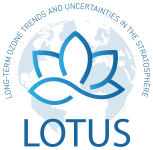Speaker
Dr
Viktoria Sofieva
(Finnish Meteorological Institute)
Description
Recent years have seen strong activity on determining stratospheric ozone trends in order to find signs of recovery. Some weak positive signs have been detected, but also signs of continuing ozone loss. Satellites are needed to make sound judgments about global trends but trend analysis is still hampered by the short time coverage of measurements. Therefore, new combined and harmonised time series have been constructed that provide better basis for analysis. The analysis of trends is largely based on the use of classical regression approach. The regressors most often used are annual and semi-annual harmonics and proxies for solar UV-radiation, Quasi-Biennial Oscillation and El Nino Southern Oscillation. Trends are retrieved assuming a linear or a piecewise linear trend model.
One alternative to the linear regression is the so-called Dynamic Linear Model (DLM). This model allows the contributions of regressors and trend change at each time step. For ozone trend analysis, this approach was first used by Laine et al. (2014). In this work, we continue this analysis by using the new merged SAGE II, Ozone_cci and OMPS ozone profile dataset (Sofieva et al., 2017). We will provide ozone trends with several time resolutions and study how the prior assumptions of the proxy variables affect the ozone trends.
Primary author
Dr
Erkki Kyrölä
(Finnish Meteorological Institute)
Co-authors
Dr
Marko Laine
(Finnish Meteorological Institute)
Dr
Viktoria Sofieva
(Finnish Meteorological Institute)

